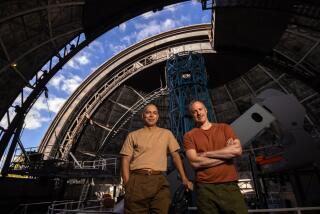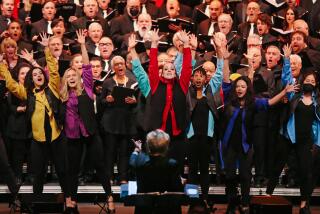Exploring percussion landscapes
- Share via
The Bang on a Can All-Stars’ splendid percussionist Steven Schick now has a massive new canvas on which to strut his stuff as a solo performer.
It’s a 69-minute, eight-movement series of sonic environments by Alaska composer John Luther Adams. The purpose of “The Mathematics of Resonant Bodies” -- co-commissioned by LACMA and given its world premiere at the Bing Theater on Monday night (kicking off a short festival of solo performances) -- is to explore what Adams calls “angel voices,” choir-like tones hidden within the washes of so-called “noise” that percussion instruments make.
He passed recorded sounds from these instruments through electronic filters and sent them through four loudspeakers, while having Schick move around the stage playing over the sounds, one species of instruments per movement. The titles of the movements tell you all you need to know about what they sound like. For example, the one using triangles is called “shimmer,” the one with a gong is “roar,” the one with cymbals is “crash.”
The piece could be called “The Young Person’s Guide to the Percussion Family,” or avant-garde mood music, with maybe a bit of Mickey Hart’s “Planet Drum” thrown in. The movement with a huge bass drum, titled “rumble,” suggested a distant, moody storm somewhere in the Alaskan wilderness, while “roar” might have been a spaceship landing on your roof, making a deafening racket.
Oddly enough, the idea of angel voices didn’t come to mind at all. But the piece allows each listener’s imagination to wander freely through each landscape, while admiring Schick’s disciplined command of his sticks.
More to Read
The biggest entertainment stories
Get our big stories about Hollywood, film, television, music, arts, culture and more right in your inbox as soon as they publish.
You may occasionally receive promotional content from the Los Angeles Times.










